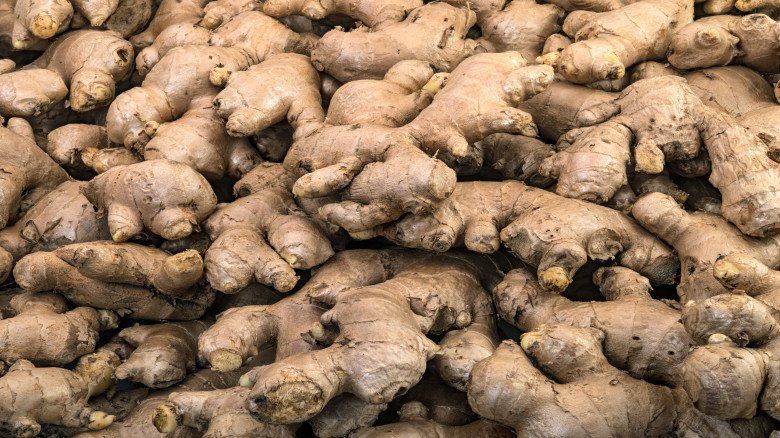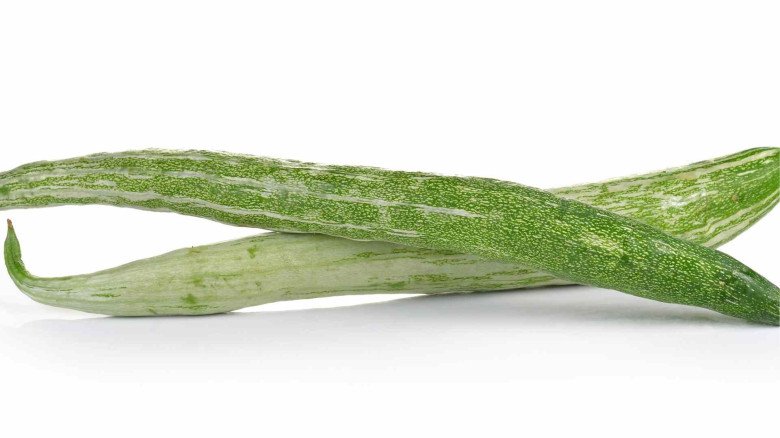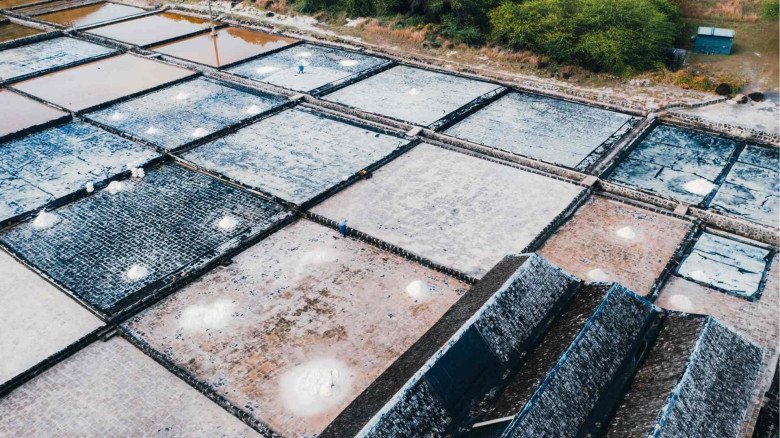11 Major Problems Faced By Indian Farmers In Agriculture In 2024
An important part of the Indian economy is the agricultural industry. Approximately 18% of India's GDP comes from agriculture, which employs roughly 60% of the nation's population. Numerous problems afflict farmers. These impact the farmer's life either directly or indirectly. Farmers have several difficulties in everything from input procurement to marketing and post-harvest operations. But the issues that farmers confront are often ignored. These are some of the main issues that Indian farmers are facing.
1. Small and Fragmented Land Holdings: Small and fragmented land holdings are the primary driver of Indian agriculture. The farmers become less capable as a result. India had 146.45 million hectares of total operating land and 157.82 million hectares of total operated area as per the results of the 10th Agricultural Census, which was conducted in 2015–16. 86.2% of the total operational holdings were made up of marginal and minor operational holdings, which ranged from 0 to 2 hectares. This land fragmentation prevents farmers from making a sufficient living. This is due to the challenges associated with automation and the routine agricultural practices of monocropping and product production, which degrade the quality of the soil. Low productivity and high manufacturing costs result from this. The inheritance law is the primary cause of this issue.
2. Lack of Marketing and Storage Facilities: Farmers have issues with agricultural marketing due to high transportation costs, poor market infrastructure, unstable prices, a lack of accurate market information, and the tendency to take advantage of local intermediaries and merchants. One issue limiting post-harvest losses in rural regions has been the absence of storage facilities. Due to a shortage of storage facilities, over 16% of fruits and vegetables, 10% of oilseeds, 9% of pulses, and 6% of grains are wasted annually. Farmers are compelled to sell their food as soon as it is harvested, even at reduced rates, since the majority of agricultural output is perishable. They make a pitiful living off of this. It is difficult for farmers to satisfy demand during the off-season due to a lack of storage facilities.
3. Poor automation Adoption: In India, laborer's still do the majority of agricultural tasks despite the growth of automation. Plowing, harvesting, threshing, and irrigation in India have the greatest levels of automation, ranging from 60 to 70%. Few farmers employ equipment for crop production, despite its invention being used for other agricultural tasks like weeding and sowing. Limited farmers find it challenging to use automation because of their limited land holdings. This issue is brought about by rural farmers' ignorance and financial limitations.
4. financing Availability: In the agricultural sector, timely, sufficient, and affordable financing from financial institutions is increasingly crucial, particularly for small and marginal farmers. Capital is one of the most important inputs for raising agricultural productivity, together with all other inputs. Credit availability is one of the variables affecting agricultural output. Compared to farmers without such restrictions, those with capital limits would utilize less inputs since they would not invest in improved technologies, machinery, and equipment for their production operations. Production quality and production are both impacted by this.
Increased access to financing might help make the best use of inputs possible and significantly affect agricultural yield. If credit is readily available, farmers may be able to meet their consumption requirements as well as the monetary demands brought on by the cycle of agricultural output. Governments have been making improvements to their agricultural lending rules, but the regional disparity in loan distribution has persisted over time.
5. Inadequate irrigation infrastructure: In India, irrigation in agricultural uses accounts for 80% of water use. One of the main things influencing agriculture is the declining groundwater table. Efficient irrigation systems facilitate farmers' timely completion of agricultural tasks. Since 65% of irrigation utilizes groundwater sources, there has been a noticeable fall in the groundwater table in recent years owing to overexploitation. There aren't many irrigation options in India, and most farmers still rely on rainfall. In our nation, rainfed agriculture makes up around 40% of overall output and roughly 51% of the net planted area.
Indian farmers and the impact of climate change in 2024 from Farmersrathna Agri-news
Farmers mostly use flood irrigation techniques in the regions they irrigate. Despite the fact that micro irrigation systems are becoming more popular, big farmers represent the majority of those who use them. Farmers in poverty cannot afford it. Approximately 68.38 million hectares make up the net irrigated area of the total area seeded in 2021. which only makes up 12.90 million hectares, or 18.8% of the total irrigated area, are under micro-irrigation.
6. A decline in soil fertility: There has been a rise in the usage of chemical fertilizers since the 1960s Green Revolution. Farmers have been overusing fertilizers in an effort to see results more quickly. Overuse of chemical fertilizers results in low production because it lowers the amount of humus and organic matter in the soil, reduces the population of beneficial insects, stunts development, increases insect assaults, and changes the pH of the soil.
Over time, an unbalanced urea consumption causes the soil's fertility to decline. In 2022–2023, urea makes well over half of all fertilizer output (58.4%), consumption (57.9%), and imports (35.1%). Continuous cultivation and improper agricultural practices are two other factors that contribute to soil depletion. A total of 52.8 million hectares, or almost 47% of the total cultivated land in India, were planted to monoculture in the 2015–16 year.
7. Insufficient availability of crop insurance programs: Farmers continue to encounter many key issues with crop insurance schemes, such as insufficient coverage, improper understanding of the plans, assessment of the extent of damages resulting from crop losses, and non-payment or delayed claim settlement.
8. The effects of global warming : Extreme weather events including droughts, floods, and storms may occur more often and with greater severity as a result of climate change. Reduced productivity and revenue for farmers may result from these changes, which may also have an impact on animal output, agricultural yields, and soil fertility. It may be necessary for farmers to make more investments in pest and disease control techniques, which might raise expenses and lower income. Heat waves have the potential to create heat stress in crops, which has an impact on production, particularly when they happen during fruit set, pod set, or pollination. In some areas, water shortage brought on by climate change may impact irrigation and lower production. Rain-fed agriculture, which may be more erratic and susceptible to the impacts of climate change, may become the only option available to farmers.
Numerous agricultural activities are impacted by unpredictable weather, and unexpected rains during harvest will result in entire crop loss. Soil and crops may suffer from floods caused by heavy rainfall. Between 2015–16 and 2021–22, about 33.9 million hectares of India's cropland suffered damage from hydro-meteorological disasters, such as severe rains and flooding.
Soil degradation and sustainability concerns for Indian farmers in 2024 from Farmersrathna Agri-news
9. Variability in price: Farmers' livelihoods may be significantly impacted by price volatility, particularly small farmers who are more susceptible to changes in the market. Farmers may experience income instability as a result of price volatility as abrupt declines in prices might lower their earnings. Due to this, farmers may find it challenging to plan and invest in their operations, which might result in a vicious cycle of poor production and poverty. Farmers are worried about the prices they will get for their products in the future because of this predicament. Because of this, it is challenging for farmers to choose which crops to plant, how much to produce, and when to sell their goods.
10. Inadequate facilities for training and extension: Through the transmission of technology, agricultural extension programs support farmers in addressing problems and advancing rural development. However, India's extension system is not fairly balanced. Insufficient training and limited access to extension services may prevent farmers from learning about the most recent agricultural methods, innovations, and technology that may boost crop yields. Reduced output as a consequence may have an impact on farmers' revenue.
Farmers who get insufficient training and extension services may be more susceptible to pests and illnesses that might lower their production. Losses occur when people lack knowledge on how to reduce or eliminate these risks. Due to a lack of training and extension efforts, farmers may not be aware of current programs, financial aid, or how to get the funds necessary to invest and raise their production.
11. The government's restricted R&D spending: Farmers who get little government funding for research and development (R&D) face lower production, higher expenses, and decreased profitability. Farmers may not have access to better crop varieties, new technology, and best practices if government investment on R&D is restricted. This would lower production and make farmers less competitive in the market. Reduced government funding for research and development might compel farmers to make costly on-site adaptations to changing environmental circumstances. Farmers may find it harder to compete in the market if this raises the cost of production.
In conclusion, the majority of Indian farmers are small and marginal farmers who mostly deal with the aforementioned difficulties in the agricultural sector. Farmers deal with a variety of issues in agriculture, both natural and man-made, such as soil erosion, biodiversity loss, climate change, depletion of water resources, and shortages of labor, money, and other inputs. These issues are typically caused by a lack of knowledge, a slow uptake of new technology, a lack of funding, or a disconnect between farmers and government agencies. Although there is no perfect solution for these issues, they may be somewhat alleviated by using sustainable resource management techniques, smart farming methods, and building bridges between rural farmers, the government, and financial institutions.
-logo.webp.png)
.jpg)
-logo.webp.png)


































Leave A Comment